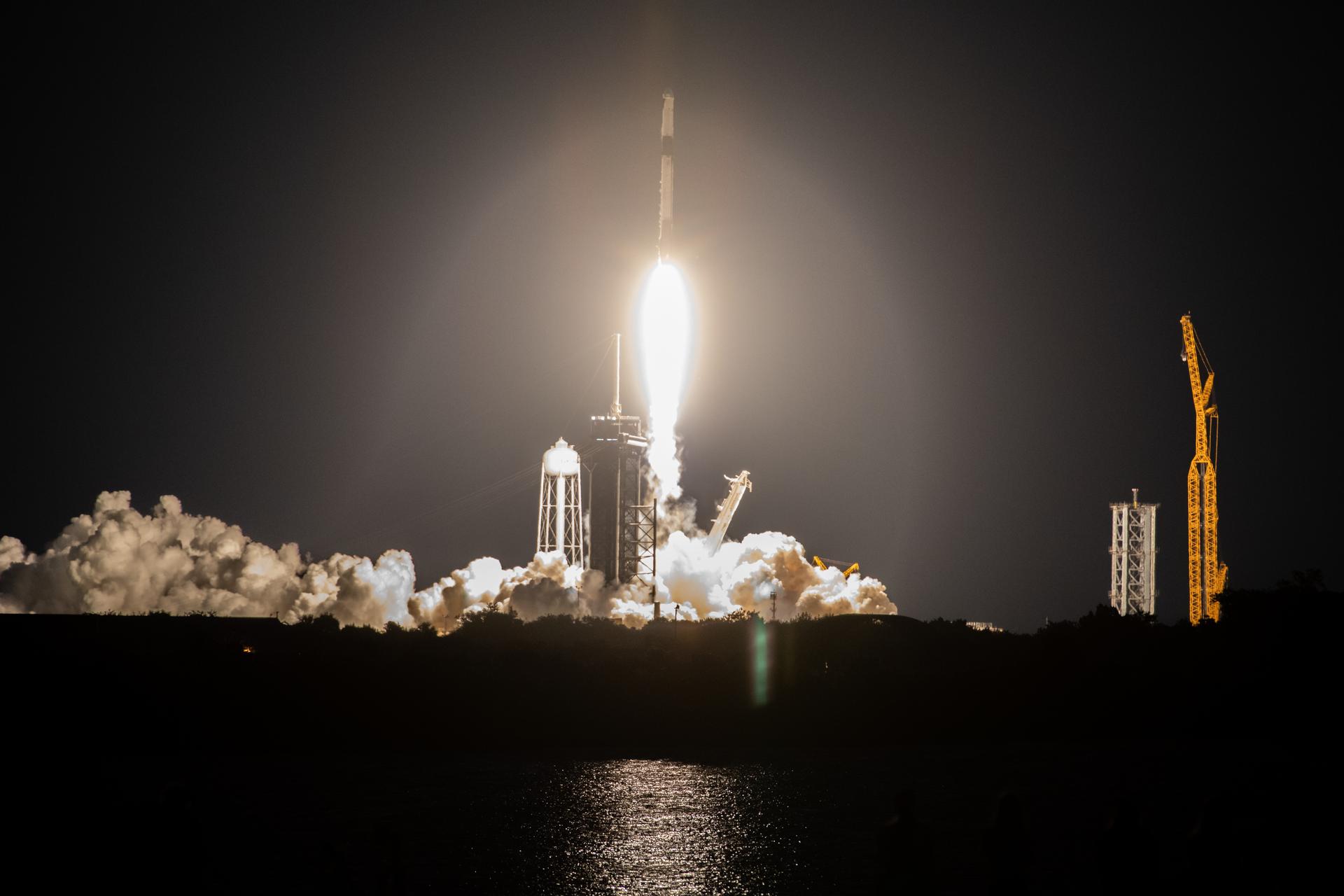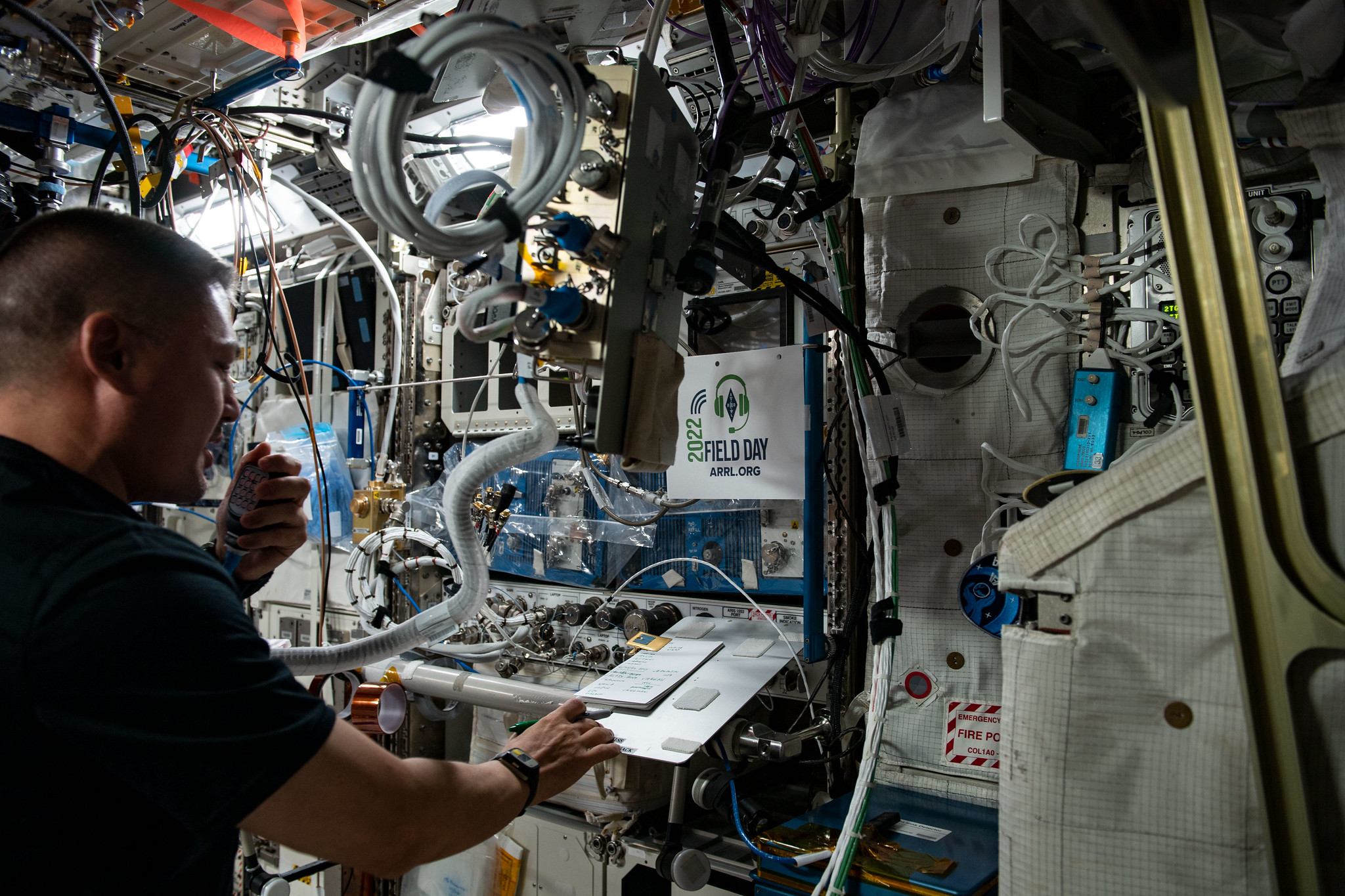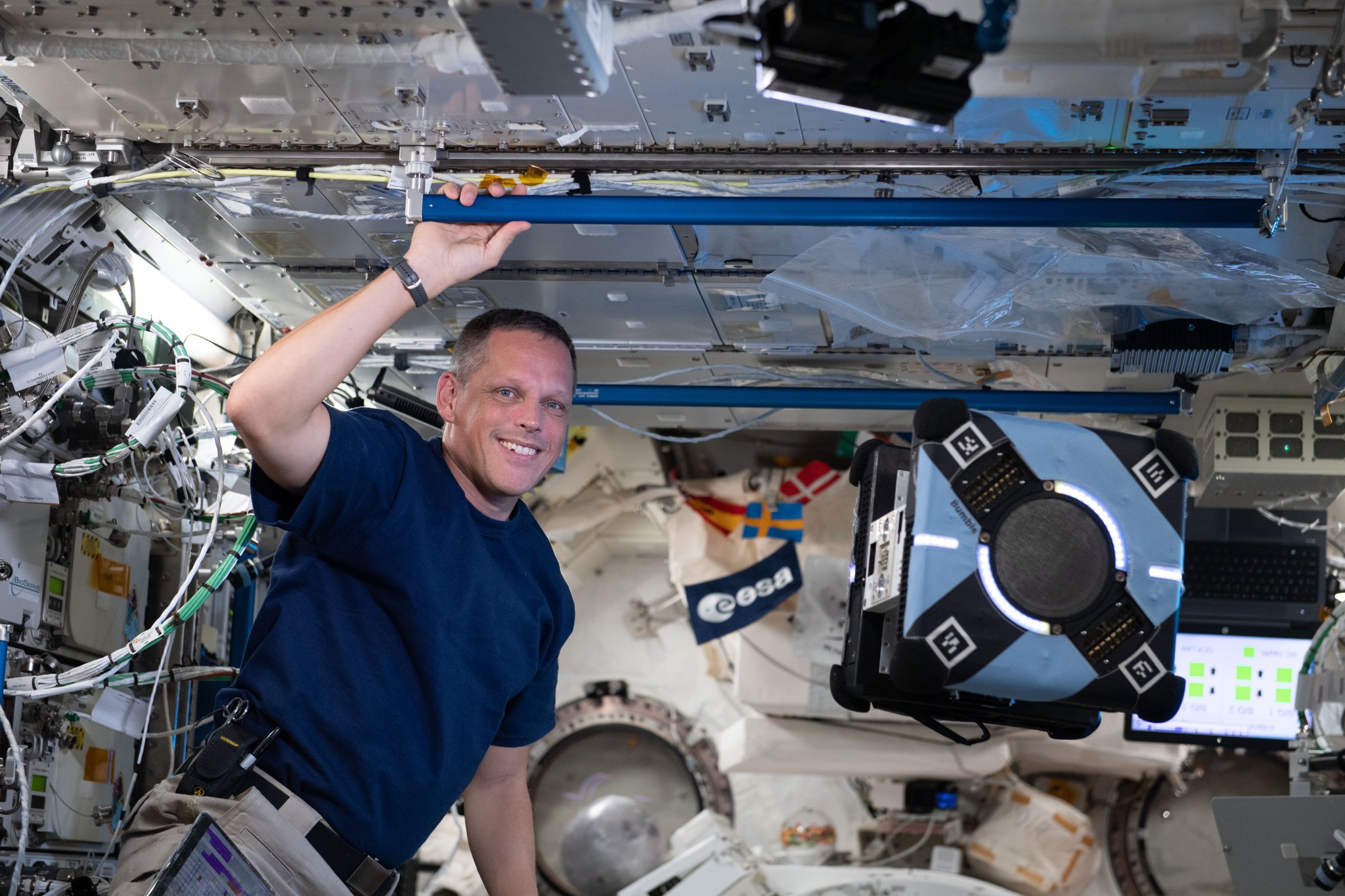
Crew members aboard the International Space Station conducted scientific investigations during the week of July 11 that included demonstrating an ultrasound device in microgravity, running a student robot programming challenge, and testing a method for processing complex glasses in space. The 25th SpaceX cargo resupply services mission (SpaceX CRS-25) launched to the space station this week carrying scientific research and technology demonstrations.
Here are details on some of the microgravity investigations currently taking place aboard the orbiting lab:
Advancing ultrasound technology
Butterfly IQ Ultrasound demonstrates a portable ultrasound device paired with a mobile computing device for use in the space environment. Such commercial off-the-shelf technology could provide critical medical capabilities to crews on long duration missions where immediate ground support is not an option. The technology also has potential applications for medical care in remote and isolated settings on Earth. During the week, crew members conducted ultrasounds using an iPad for imaging purposes and downlinked the images and recording of the process to the team on the ground.
Robo rumble
This week, the preliminary round of the Japan Aerospace Exploration Agency (JAXA) Kibo Robot Programming Challenge (Kibo-RPC) took place aboard station. To participate, students write software to control one of the space station’s Astrobee free-flying robots. The first several rounds of the competition, co-led by the Massachusetts Institute of Technology, the Innovation Learning Center, and many collaborators, use an online simulation. NASA downloads code from the finalists to the station’s Astrobee platform and students observe its performance. The experience helps inspire the next generation of scientists, engineers, and explorers.
Microgravity materials
UNIGLO tests the effects of microgravity on a glass optics module that uses artificial intelligence to help adapt materials processing techniques to microgravity and a sensor that measures microgravity’s effects on processing of complex glasses for a variety of applications in space and on Earth. Results could lead to development of novel optical communication fibers, fiber amplifiers, and fiber lasers with applications in planetary and space-based defense systems, cryptography networks, and space-based X-ray-optics astronomy. Sample exchanges were completed by the crew and two sample runs were performed this past week.
Other investigations involving the crew:
- Wireless Compose-2, an investigation from ESA (European Space Agency), demonstrates the Smart Shirt, a garment with sensors that measure body motion and heartbeat, and a wireless network for transmitting the data. This technology has the potential for uses such as monitoring the health of astronauts on future missions.
- ESA’s Lumina demonstrates a dosimeter using optical fibers to monitor in real time the radiation dose received by crew members. Monitoring radiation exposure is key to crew safety on future space missions, and this technology also has potential applications in the medical and nuclear industries on Earth.
- XROOTS uses hydroponic (liquid-based) and aeroponic (air-based) techniques to grow plants without traditional growth media, which could enable production of crops on a larger scale for future space exploration.
- ISS Ham Radio provides students, teachers, parents, and others the opportunity to communicate with astronauts using amateur radio units. Before a scheduled call, students learn about the station, radio waves, and other topics, and prepare a list of questions based on the topics they have researched.

The space station is a robust microgravity laboratory with a multitude of specialized research facilities and tools. Over more than two decades of continuous operation, it has supported many scientific breakthroughs from investigations spanning every major scientific discipline. The orbiting lab conveys benefits to future space exploration, advances basic and applied research on Earth, and provides a platform for a growing commercial presence in low-Earth orbit.
For daily updates, follow @ISS_Research, Space Station Research and Technology News, or our Facebook. Follow ISS National Lab for information on its sponsored investigations. For opportunities to see the space station pass over your town, check out Spot the Station.
John Love, ISS Research Planning Integration Scientist
Expedition 67





























